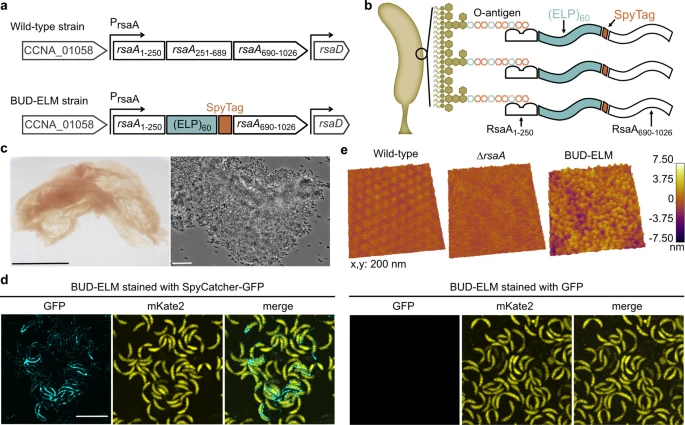Nanowerk September 22, 2022
Engineered living materials (ELMs) embed living cells in a biopolymer matrix to create materials with tailored functions. While bottom-up assembly of macroscopic ELMs with a de novo matrix would offer the greatest control over material properties, the ability to genetically encode a protein matrix that leads to collective self-organization is lacking. A team of researchers in the US (Rice University, Lawrence Berkeley National Laboratory, UC Berkeley) grew ELMs from Caulobacter crescentus cells that display and secrete a self-interacting protein. This protein formed a de novo matrix and assembled cells into centimeter-scale ELMs. Discovery of design and assembly principles allowed them to tune the composition, mechanical properties, and catalytic function of the ELMs. According to the researchers their work provides genetic tools, design and assembly rules, and a platform for growing ELMs with control over both matrix and cellular structure and function…read more. Open Access TECHNICAL ARTICLE

Engineered strains of C. crescentus self-assemble into BUD-ELMs. Credit: Nature Communications volume 13, Article number: 5544 (2022)